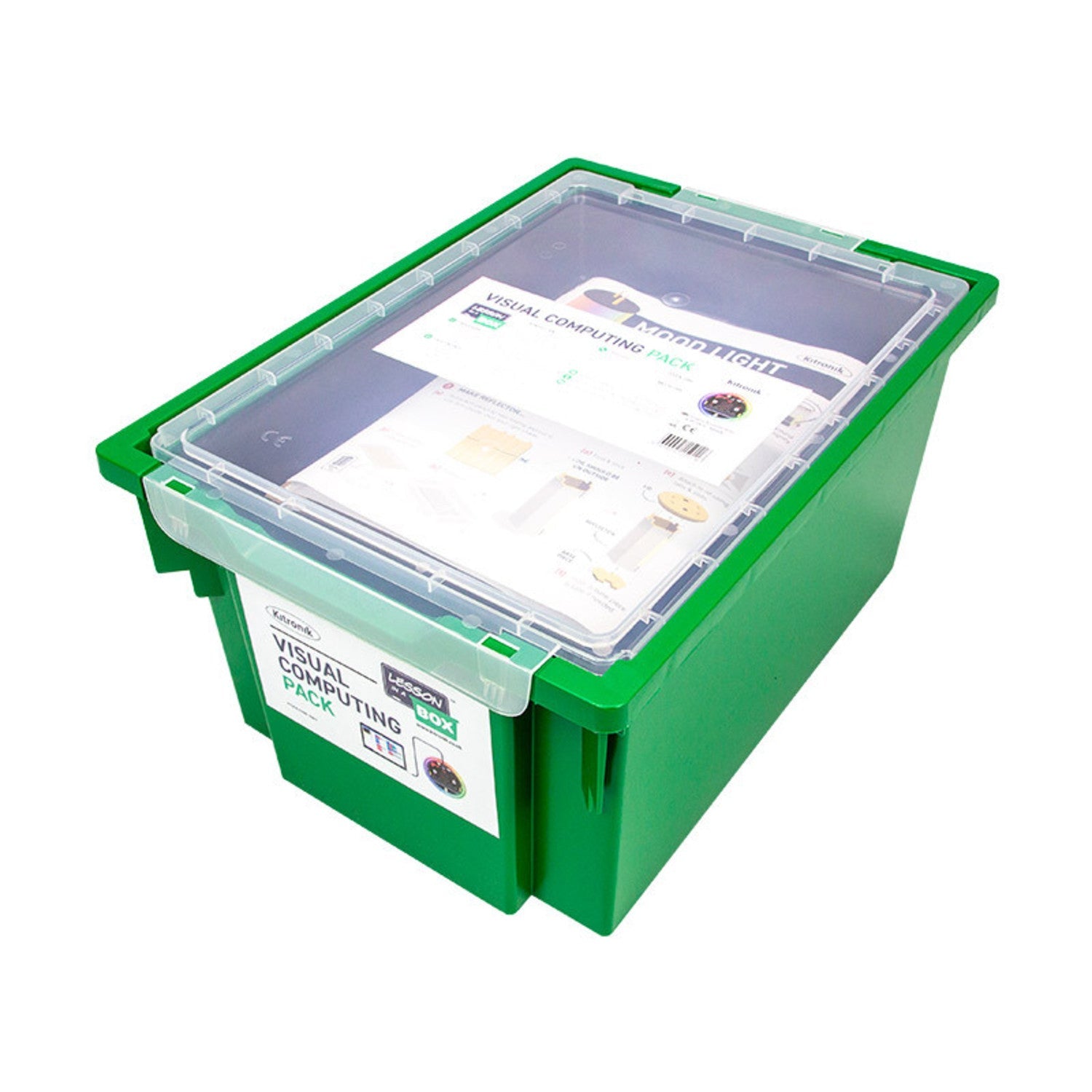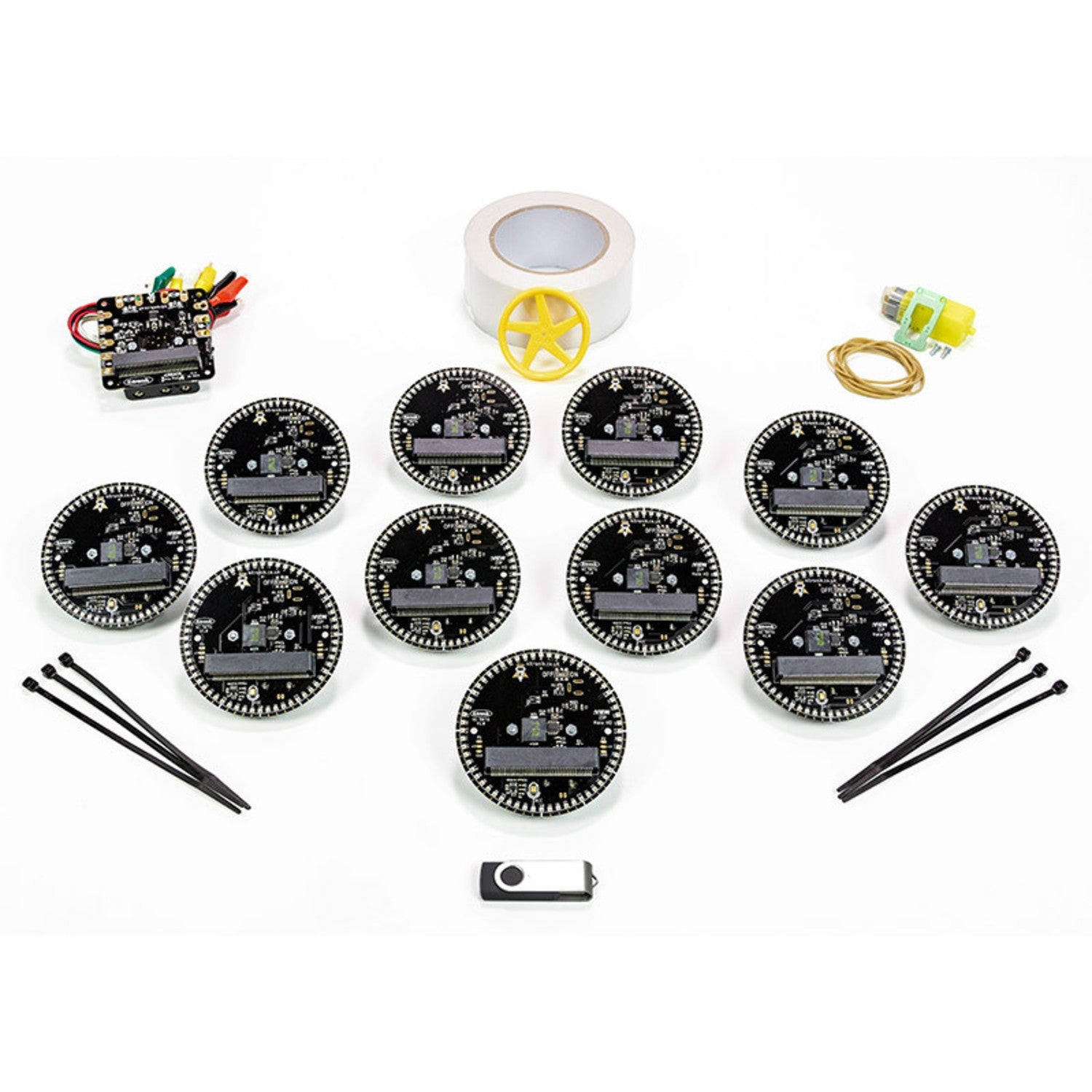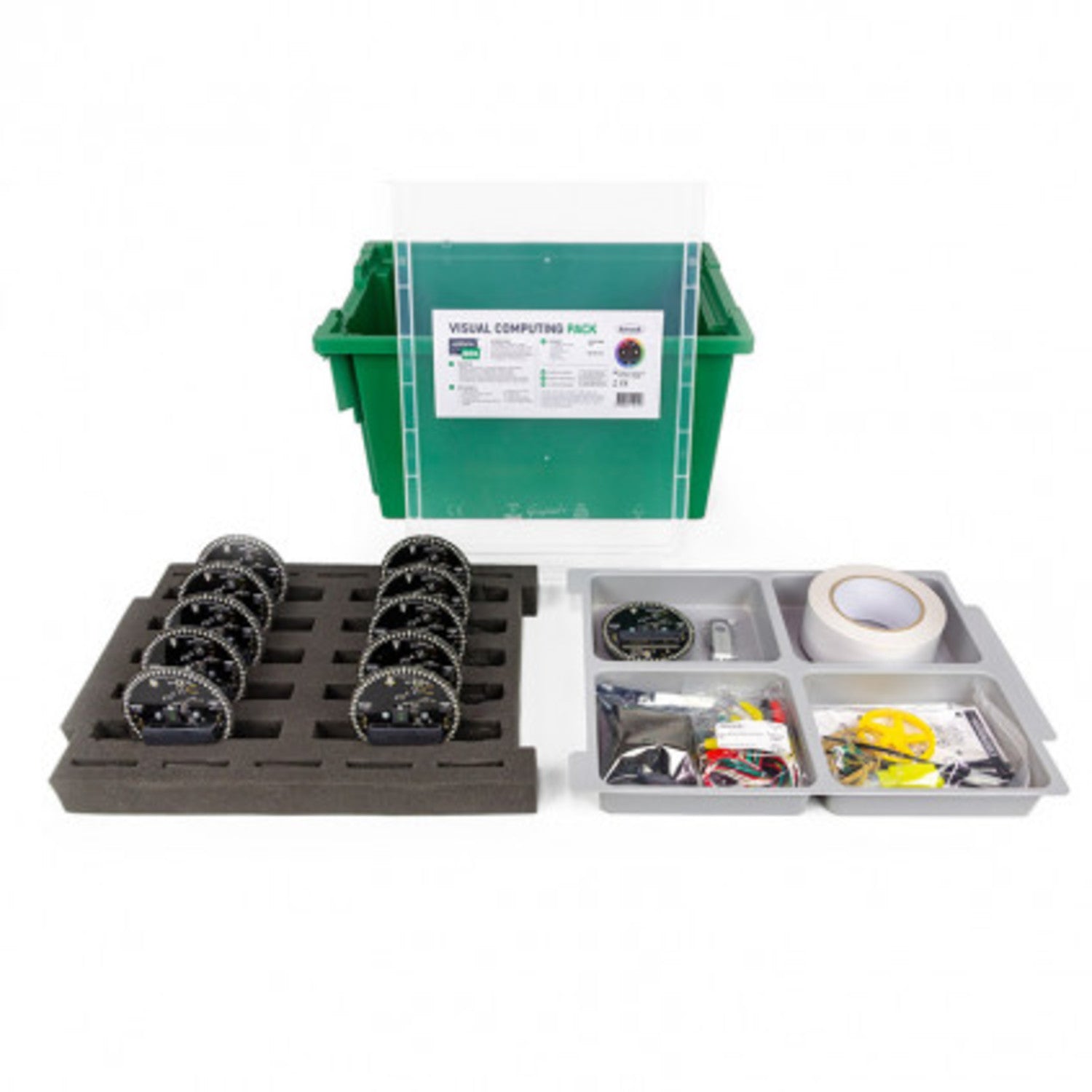Designed by teachers and tested by pupils, this Kitronik Visual Computing Pack for micro:bit saves you time when teaching Visual Computing at KS3/KS4 (US equivalent - Grades 6 - 8/9 - 10). It's a complete set of parts and teaching resources for successful cross - curricular lessons. The subject packs come with a detailed lesson plan, cross - referenced to class slides, workbooks, checklists, technicians notes, and AFL guidance with answers and plenaries. In different subjects like D and T, Computing, Physics/Combined Science, and Geography, it offers diverse visual coding lessons. There are also two enrichment challenges for experimentation and Open Day activities. The pack is affordable, useful, and robust for repeated use. Teaching resources are teacher - friendly, with enough detail for easy use or customization. Each lesson includes technicians notes, lesson plans, slideshows, workbooks, assessment questions, and example code. The activities use the BBC microbit, Kitronik ZIP Halo HD for micro:bit, and a clippable motor driver board. No soldering is required. It's packaged in a sturdy reusable Gratnells tray. The USB drive contains full teaching resources for 13 lessons and 2 enrichments, along with teachers' and technicians' guides, DXF files, printable templates, code HEX files, and a solderless TT motor board assembly guide. 11 x BBC micro:bit are required.



How to use: First, take out the 2GB swivel USB stick. It has all the teaching resources you need. Follow the detailed lesson plan in it for each subject and each lesson. You can use the included slideshows, workbooks, and example code to run your class. The BBC microbit, Kitronik ZIP Halo HD for micro:bit, and the clippable motor driver board are the main components for the activities. Just connect them according to the guides. For the cardboard templates, you can use the pre - cut ones or make additional ones with the DXF files on the USB. Attention: Make sure to have 11 BBC micro:bit as required. When using the motor and other components, handle them gently to avoid damage. Maintenance advice: After each use, put all the parts back into the Gratnells tray with the translucent lid. Keep the tray in a dry and safe place. If there is any dust on the components, you can use a soft cloth to clean them.







